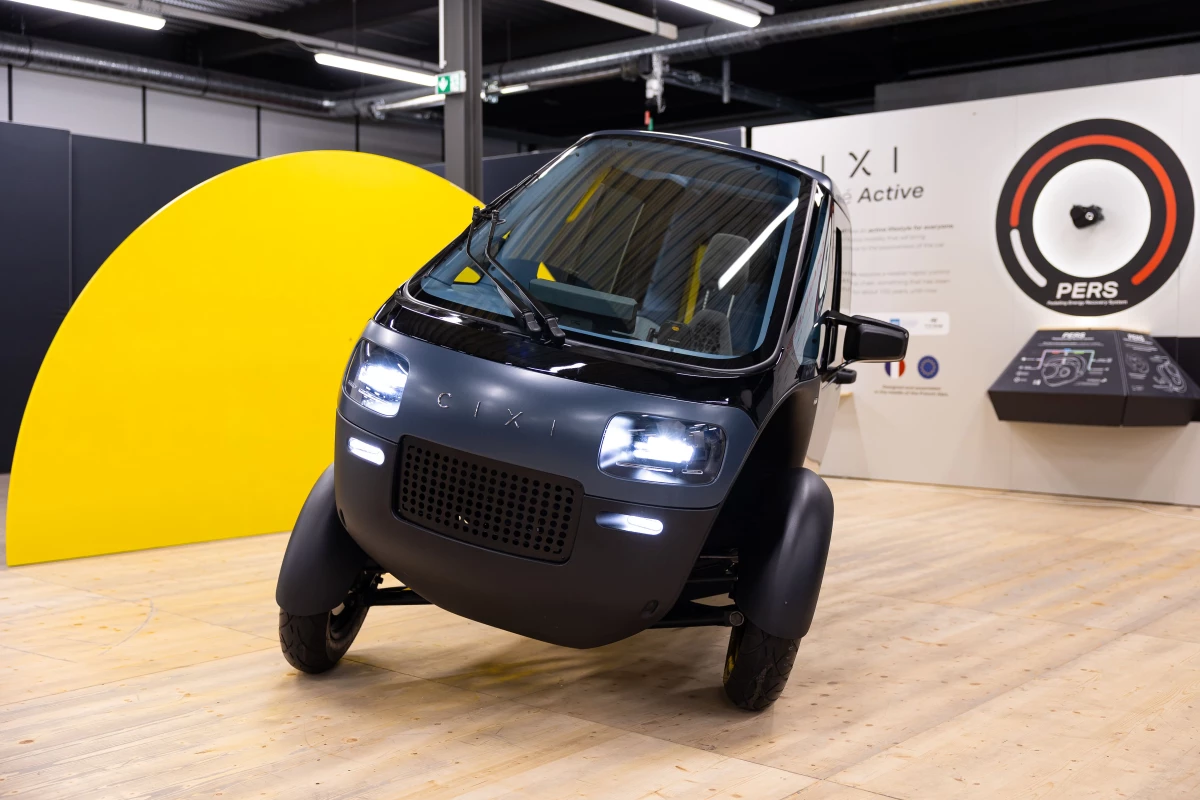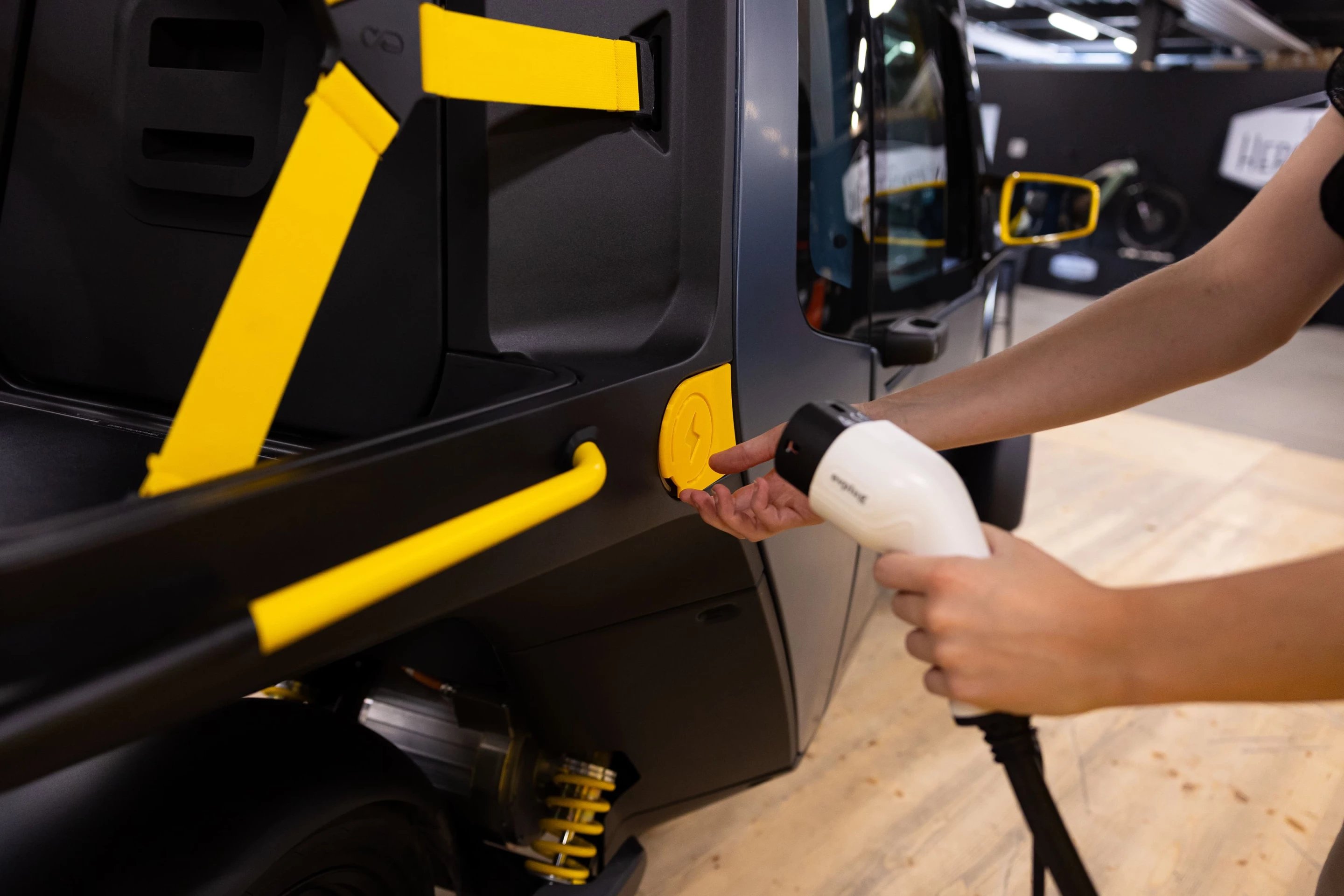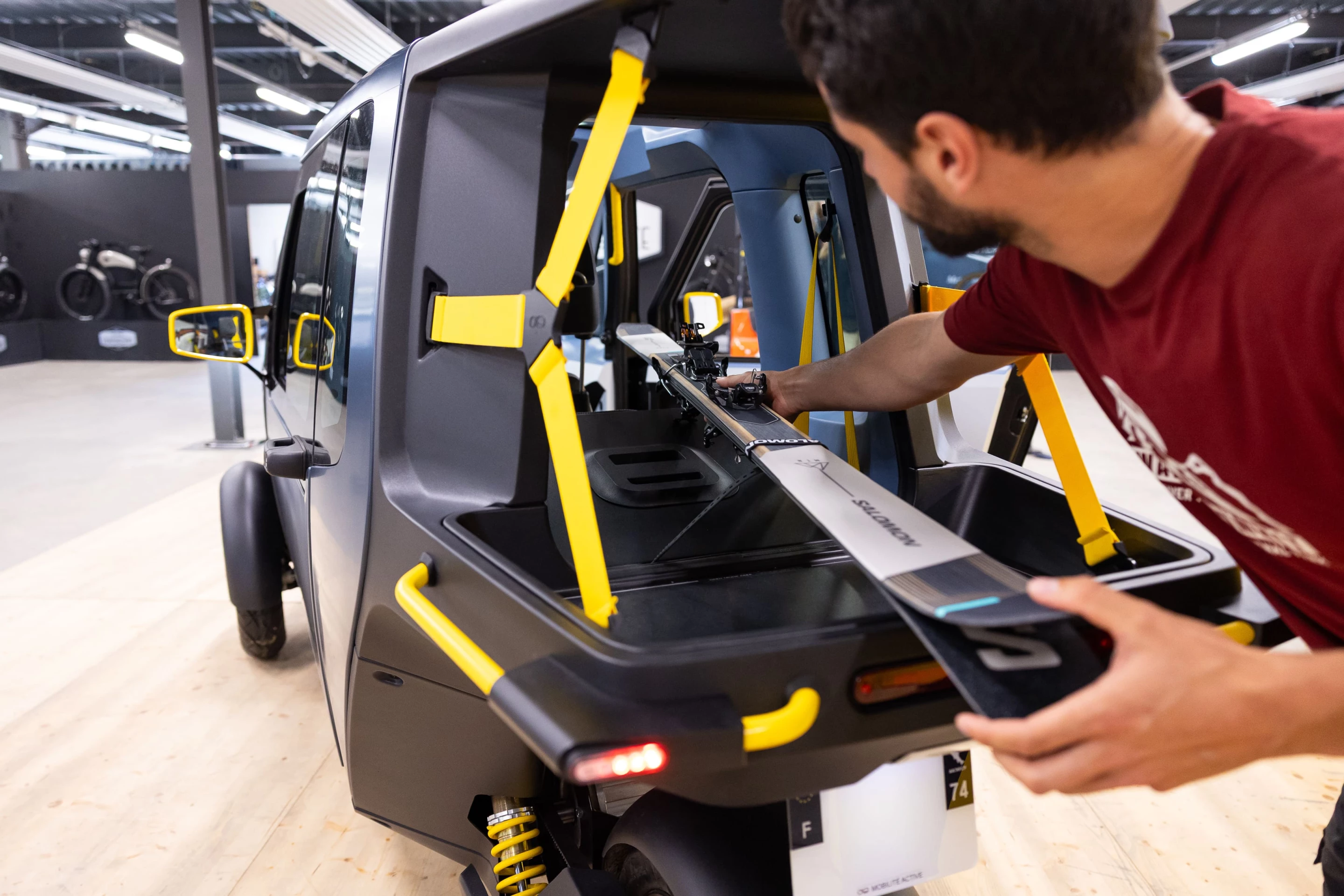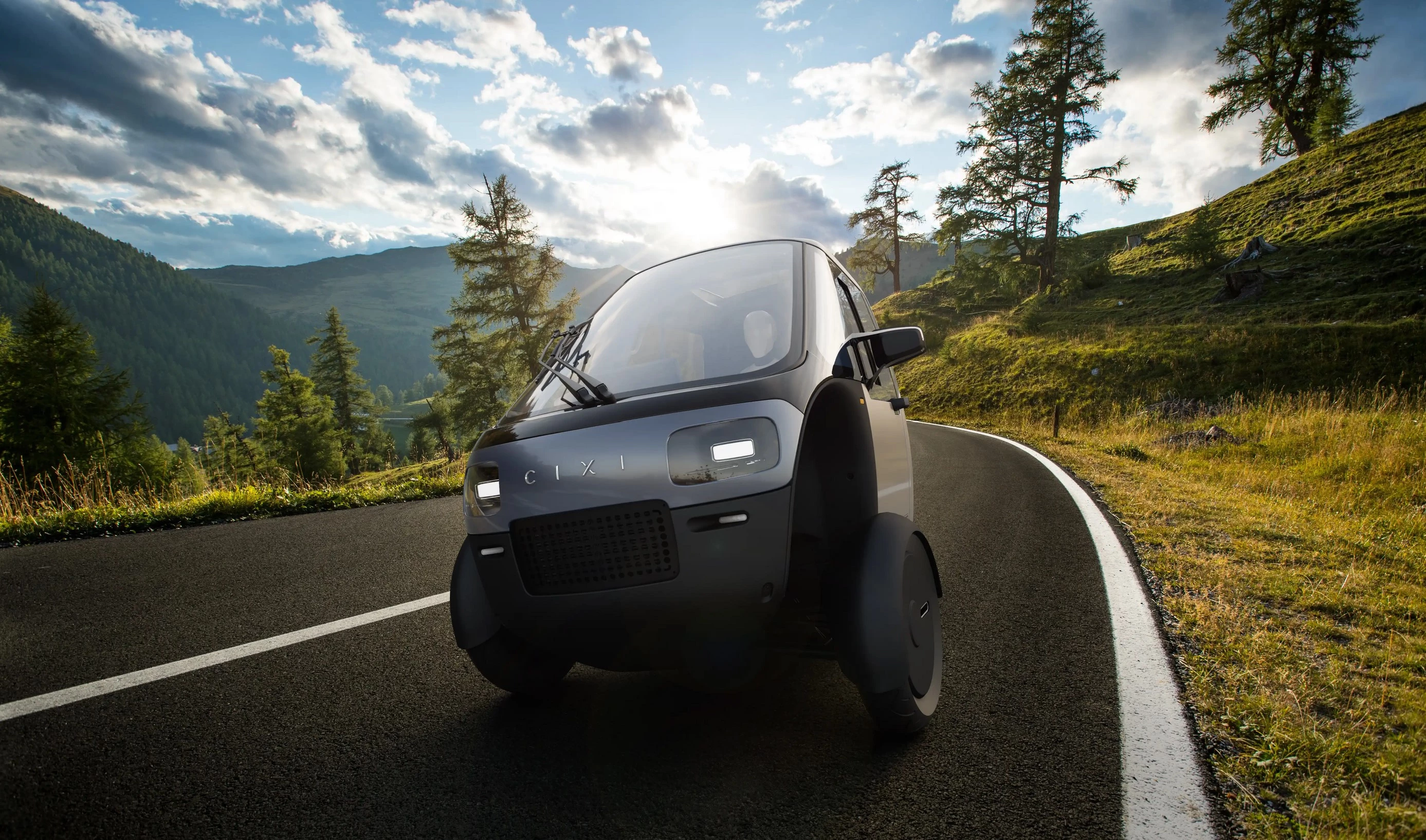For the last couple of years, French e-mobility company Cixi has been working on a three-wheeled vehicle called Vigoz that's based on its chainless pedaling system. A skeletal prototype has been tested to 100 km/h, and now the company has revealed the latest production design.
Cixi was founded about 10 years ago in the Haute-Savoie region of France, and has been working on a chainless and beltless electronic drivetrain for ebikes and cargo haulers ever since.
The company says that its Pedaling Energy Recovery System essentially "converts human power into bicycle propulsion through electricity, enabling the rider to intuitively control speed and braking by pedaling." So energy from pedaling is recovered at the crank and converted into electricity to drive a hub motor.
The system also feeds charge into a battery pack to amplify power and range, while regenerative braking helps extend the life of brake pads. PERS is reported to auto adjust pedal resistance in real time so you can "choose your preferred rhythm and enjoy the ride." If the battery runs out of juice, pedal power still drives the wheel via the motor but there's no boosting available so it might be more of a slog.
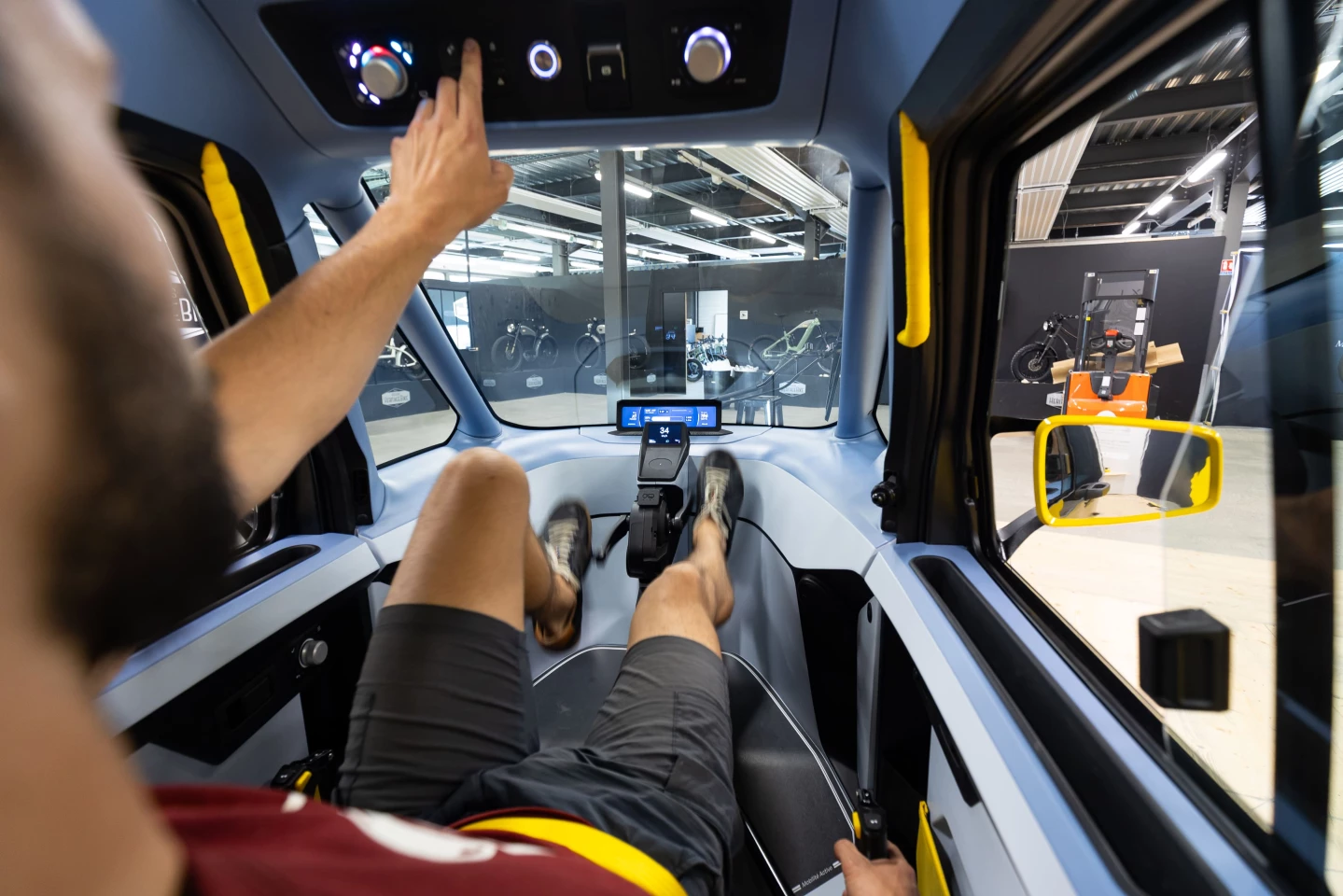
For the Vigoz vehicle, the rider sits in a recumbent position – though "the pilot's head is placed at 130 cm (51 in) from the ground" for optimum visibility – and pumps away at the pedals inside a car-like bubble. Steering is undertaken using a custom system with control handles mounted low at each side of the rider, and an active tilting system helps lean into the corners.
There's room behind for "a passenger, a pet or big stuff" – oddly though, luggage is strapped in at an open area to the rear. Both occupants are protected from the elements within the slender chassis, and are strapped in by three-point seatbelts. That chassis has been designed with energy-absorbing elements to keep occupants safe in the event of collisions. A HVAC system helps maintain a comfortable cabin temperature.
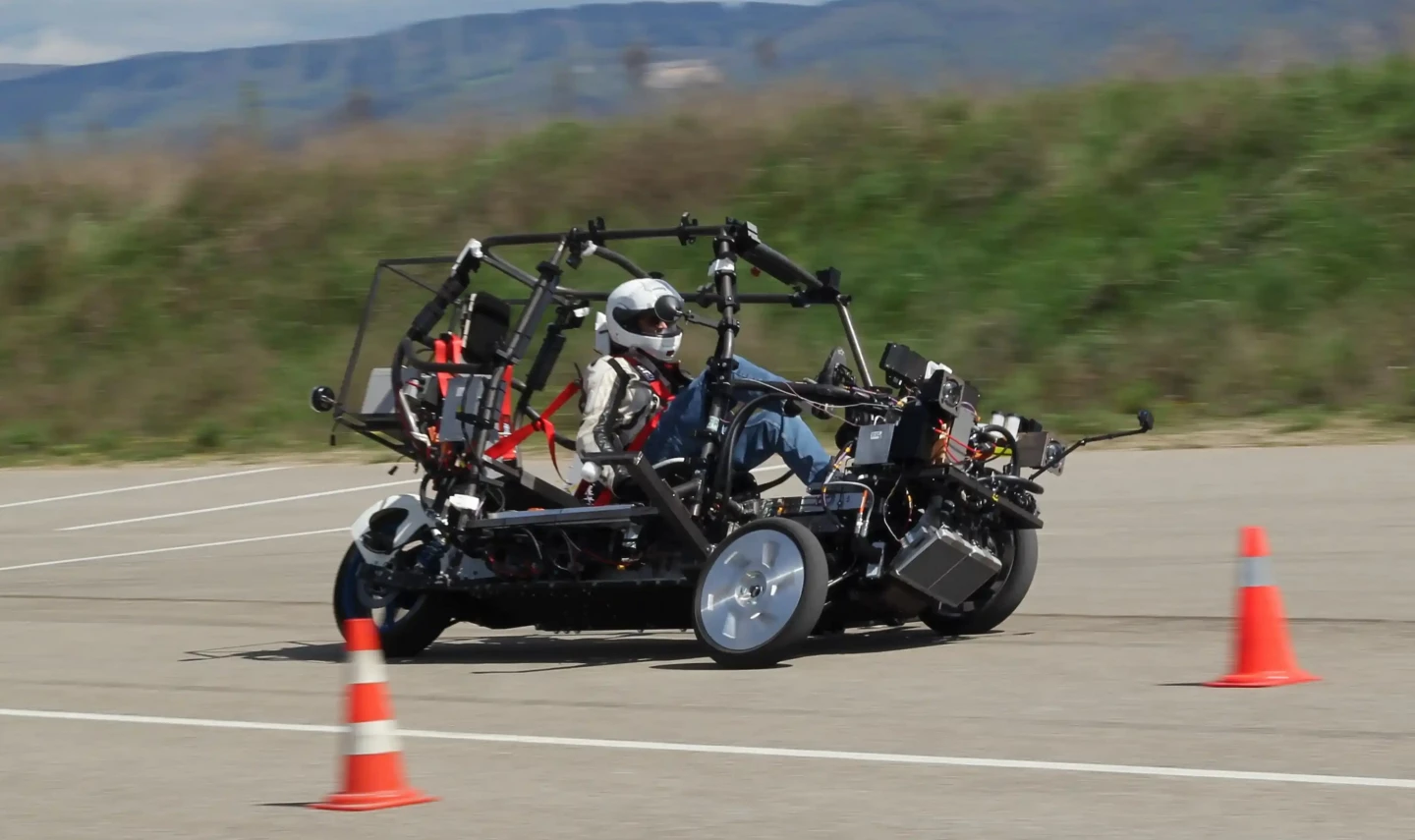
The company is aiming for a per-charge range of 160 km (~100 miles) from the 22-kWh under-floor battery pack, while the top speed of the drive system will be 120 km/h (75 mph) – though the mule prototype has so far only been tested up to 100 km/h.
Cixi has now officially unveiled the design prototype, which will be merged with the working mule to form a single vehicle that "combines all technical systems with production-level design." Then the Vigoz will enter the certification phase of development ahead of production. Reservations will opened once a solid timeline has been confirmed, though estimated pricing has not been revealed.
Source: Cixi
